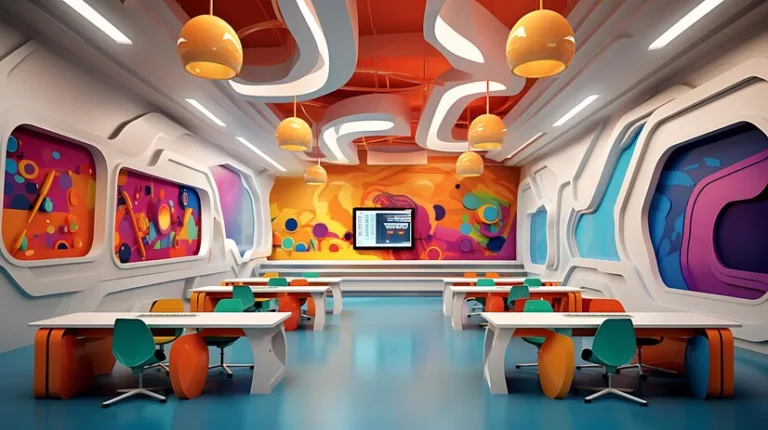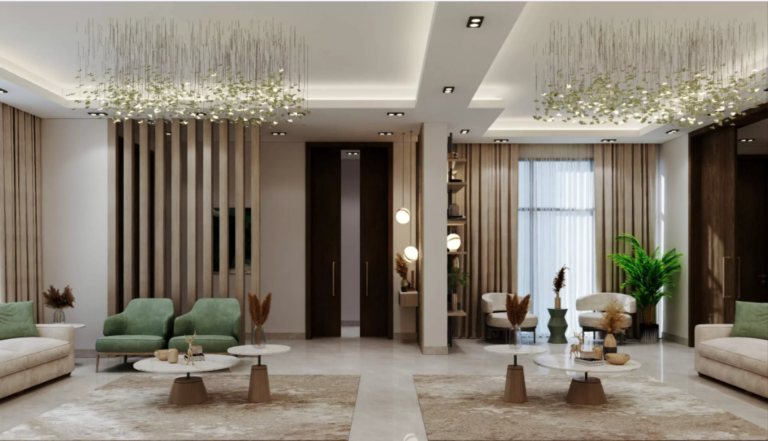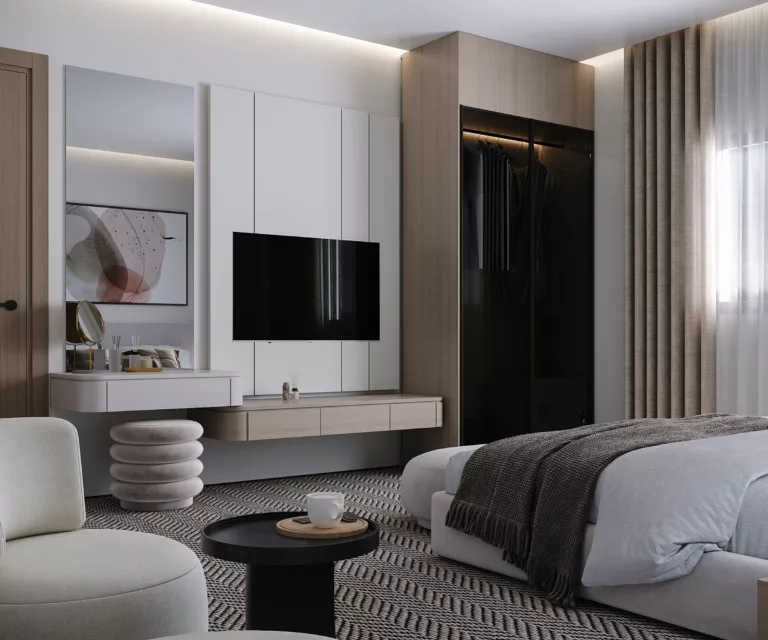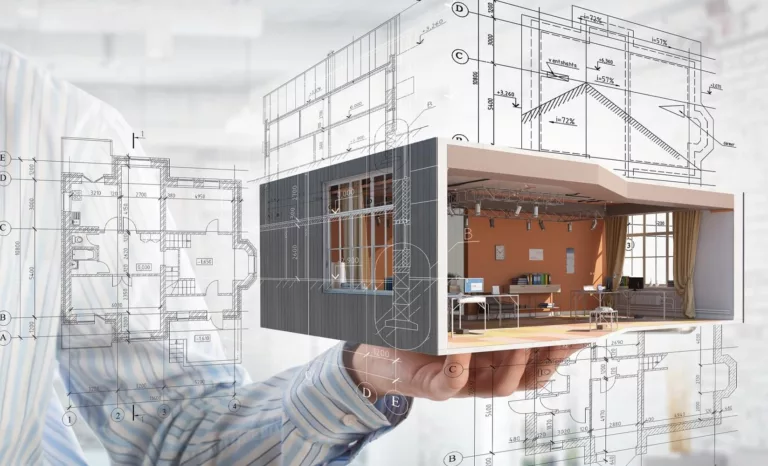Interior design plays a crucial role in schools as it creates a conducive environment for learning. It impacts students’ behavior, enhances engagement, and promotes a positive atmosphere. Effective interior design in schools improves academic performance and overall well-being of students.
Overview of the impact of interior design on learning environments
A well-designed interior promotes a positive learning environment. It impacts student behavior, engagement, and overall well-being. Effective design elements can enhance academic performance and create a conducive space for students to thrive in.
Read more: The Best Decoration Company in Riyadh
Factors to consider when designing school interiors
When designing school interiors, factors such as functionality, safety, and accessibility should be taken into account. The space should be flexible and adaptable to accommodate various teaching methods and learning styles. Adequate lighting, ventilation, and acoustics are also important considerations to create a comfortable and conducive learning environment. Additionally, the design should incorporate elements that promote creativity, collaboration, and social interaction among students.
Color Psychology in School Interior Design
When it comes to school interior design, color psychology plays a significant role. Different colors can have a direct impact on student behavior and academic performance. Choosing the right color scheme for different educational spaces is crucial in creating the desired atmosphere and promoting positive learning experiences.
Read More: 10 Trendy Women Living Room Designs
Effect of colors on student behavior and academic performance
Different colors can have a direct impact on student behavior and academic performance. For example, warm colors like red and orange can increase energy levels and stimulate creativity, while cool colors like blue and green promote a sense of calmness and concentration. Choosing the right color scheme in classrooms and study areas can enhance student engagement and productivity.
Choosing the right color scheme for different educational spaces
When choosing the right color scheme for different educational spaces, it is important to consider the specific function of each area. For example, calming colors like blue and green are ideal for study areas, while vibrant colors like red and yellow can stimulate creativity in art rooms.
Read More: Exploring the World Through Embassy Interiors
Functional Classroom Layouts
Functional classroom layouts are crucial for creating an environment that enhances student engagement and learning. By considering factors such as classroom size, seating arrangement, and accessibility, educators can design spaces that promote collaboration, interaction, and focus. Flexibility in furniture placement and the use of versatile seating options allow for different teaching styles and activities. Overall, a well-designed classroom layout can optimize the learning experience for students and facilitate effective instruction.
Optimal classroom layout designs to enhance student engagement
When designing classroom layouts, it is important to consider the optimal design that enhances student engagement. This can be achieved by creating spaces that promote collaboration, interaction, and focus. The arrangement of furniture and the utilization of versatile seating options play a significant role in facilitating different teaching styles and activities. A well-designed classroom layout can optimize the learning experience for students and create an environment that supports effective instruction.
Read More: 10 Comfortable Chairs Perfect for Small Spaces
Incorporating flexible furniture for versatile learning environments
Flexible furniture is essential in creating versatile learning environments. By incorporating movable desks, chairs, and tables, educators can easily adapt the space to suit different teaching styles and activities. This allows for seamless transitions between individual work, group collaborations, and whole class discussions. Students can move around the classroom freely, promoting engagement and active learning.
Creative Common Areas and Study Spaces
Schools should focus on creating creative common areas and study spaces that encourage collaboration and provide a welcoming atmosphere. These areas should be designed with comfortable seating, ample natural lighting, and inspiring decor to promote student engagement and productivity. Integrating technology into these spaces can also enhance the learning experience and allow students to access resources and work on projects seamlessly.
Innovative designs for school libraries and collaborative study areas
Innovative designs for school libraries and collaborative study areas play a crucial role in creating conducive learning environments. These spaces should be designed to encourage collaboration, creativity, and engagement among students. Comfortable seating, flexible furniture, and ample natural light can enhance the overall experience. Integrating technology and providing inspiring decor can further promote productivity and inspiration.
Utilizing technology in creating modern and interactive spaces
Utilizing technology is essential in creating modern and interactive spaces in schools. Incorporating smart boards, interactive projectors, and virtual reality tools enhances the learning experience and engages students in a dynamic way. Digital resources and online platforms also enable collaborative learning and provide access to a wide range of educational materials.
Sustainable and Eco-Friendly Design Solutions
Implementing sustainable and eco-friendly design solutions in schools is crucial for promoting environmental consciousness and reducing the carbon footprint. Using energy-efficient lighting, incorporating natural ventilation systems, and using recycled materials contribute to creating a greener learning environment.
Read More: 5 Veterinary Clinic Interior Design Ideas
Implementing green initiatives in school interior design
Implementing green initiatives in school interior design involves incorporating sustainable materials, such as bamboo flooring or low-VOC paint. Installing energy-efficient appliances and using natural light sources are also essential steps in creating an eco-friendly learning environment.
Benefits of sustainable materials and energy-efficient solutions
Using sustainable materials in school interior design not only helps reduce environmental impact but also improves indoor air quality. Energy-efficient solutions, such as LED lighting and smart thermostats, can significantly lower utility costs for schools, freeing up funds for other educational resources.
Budget-Friendly Tips for School Interior Design
Creating a budget-friendly school interior design can be achieved by repurposing existing furniture and fixtures, opting for cost-effective materials, and utilizing reusable or modular elements. Engaging students and staff in the design process can also be an effective way to save costs while promoting a sense of ownership and pride in the school environment.
Read more: The Best Decoration Company in Riyadh
Cost-effective strategies to improve school aesthetics and functionality
Some cost-effective strategies to improve school aesthetics and functionality include repurposing existing furniture, using cost-effective materials for renovations, and opting for modular or reusable elements in the design. By doing so, schools can enhance their interiors while staying within budget.
Engaging students and staff in the design process
Engaging students and staff in the design process creates a sense of ownership and pride in the school environment. By involving them in decision-making and gathering their input, schools can create spaces that truly meet their needs and preferences. This can be done through surveys, focus groups, or design workshops where students and staff can share their ideas and suggestions. Their active participation ensures that the final design reflects their values and promotes a sense of community within the school.






